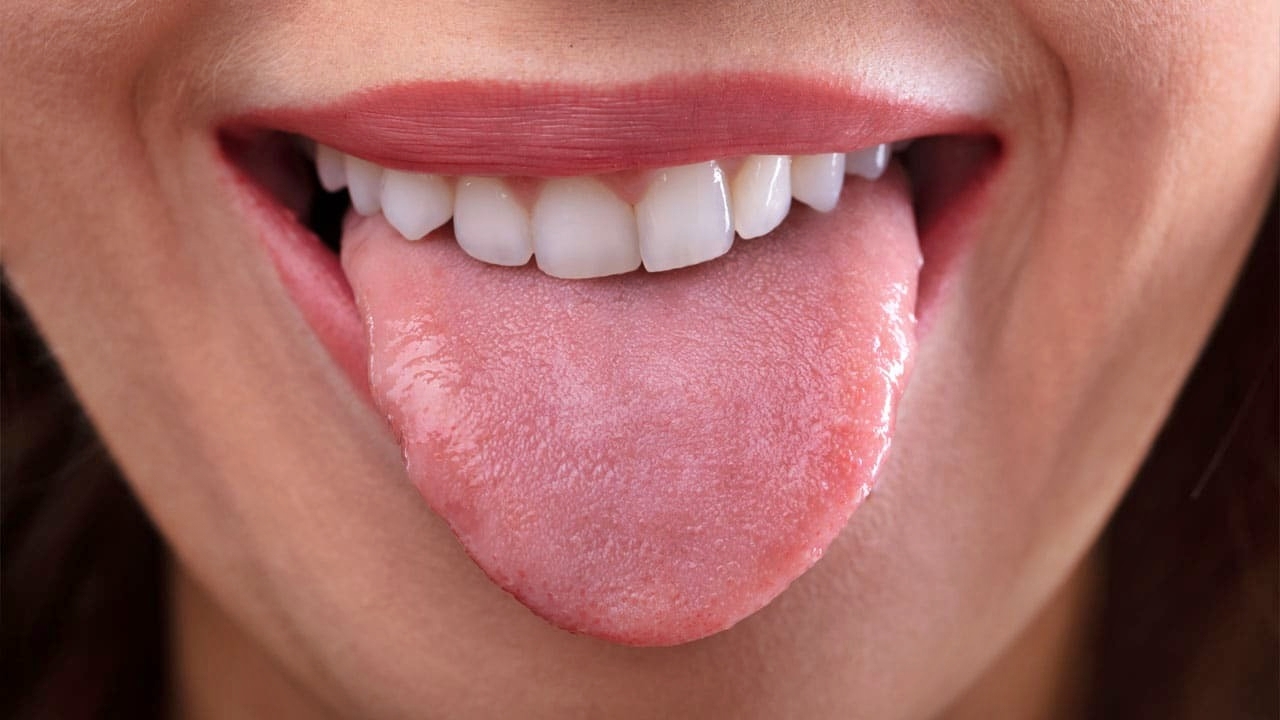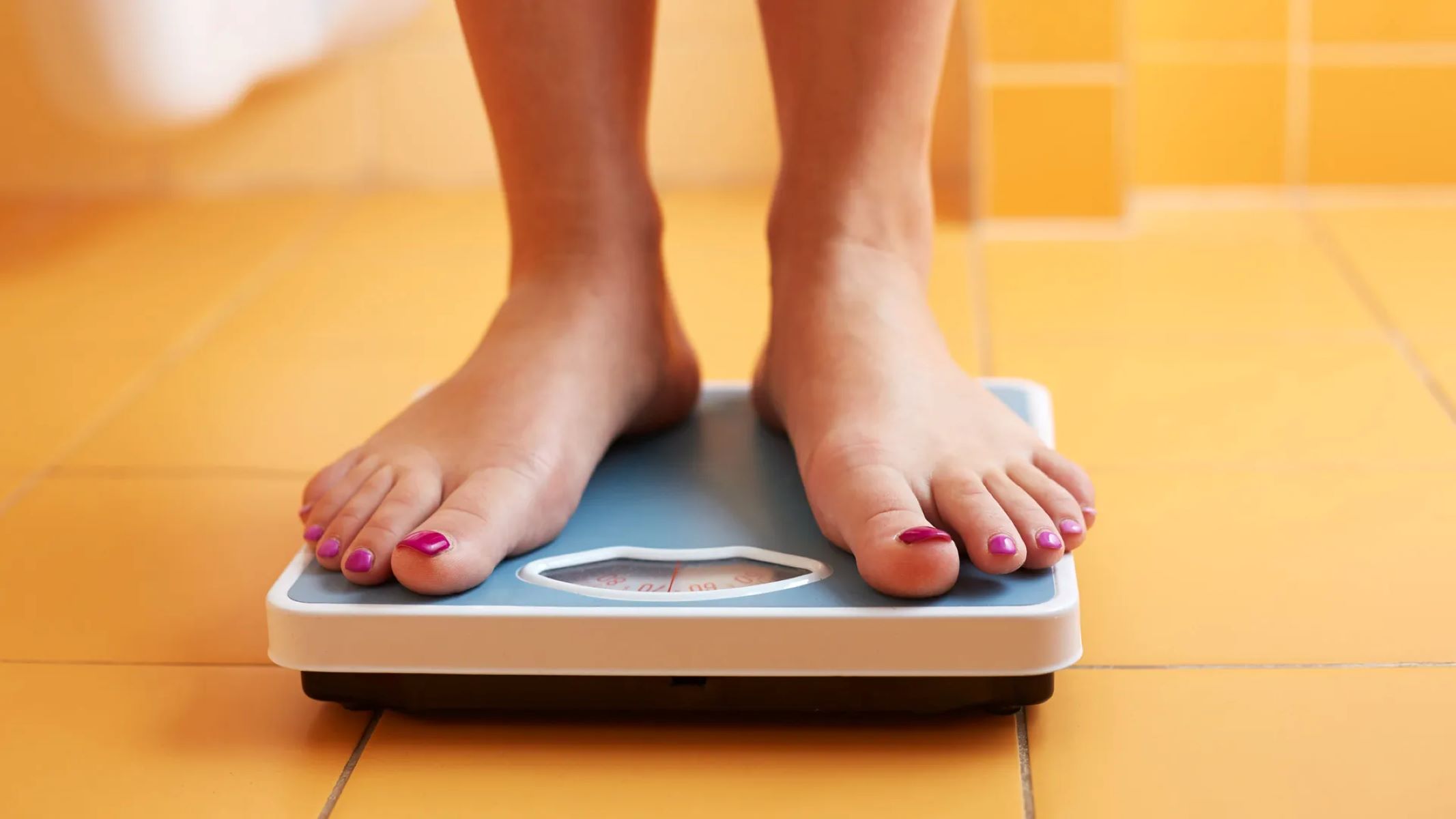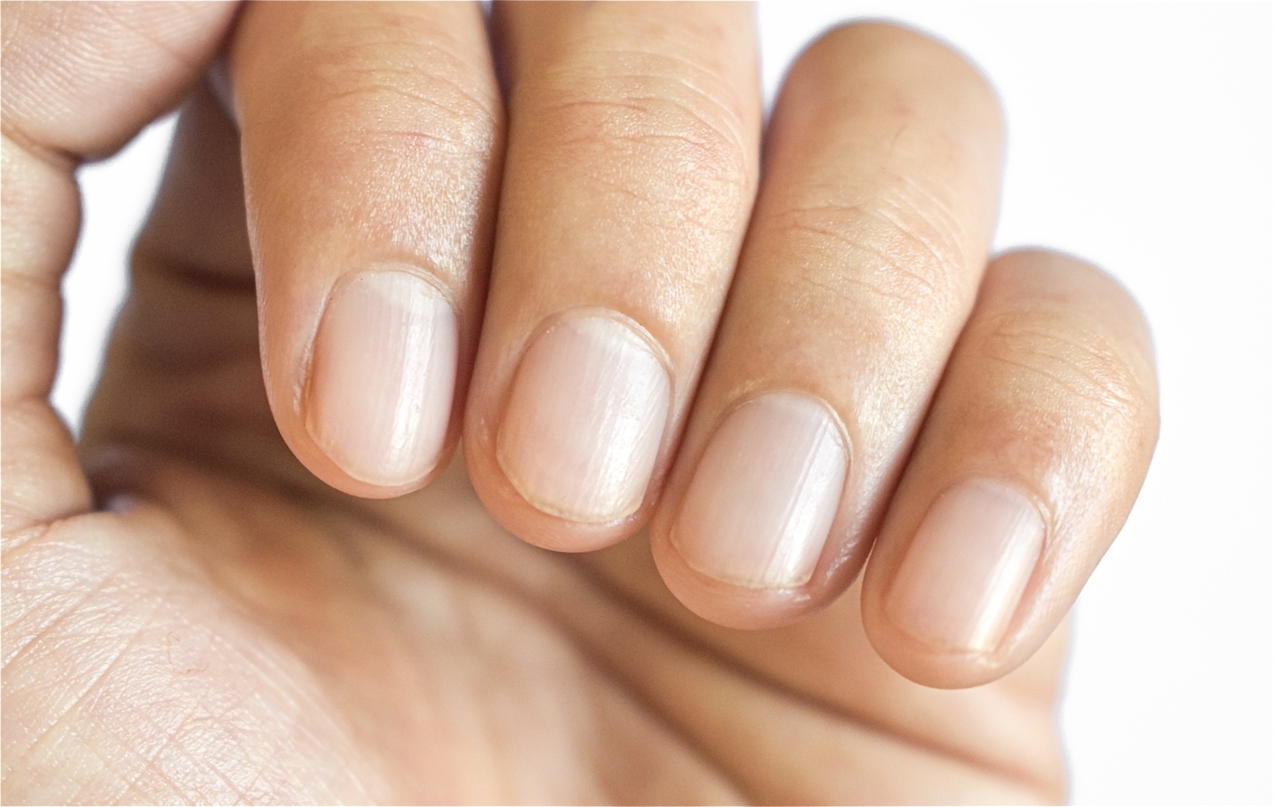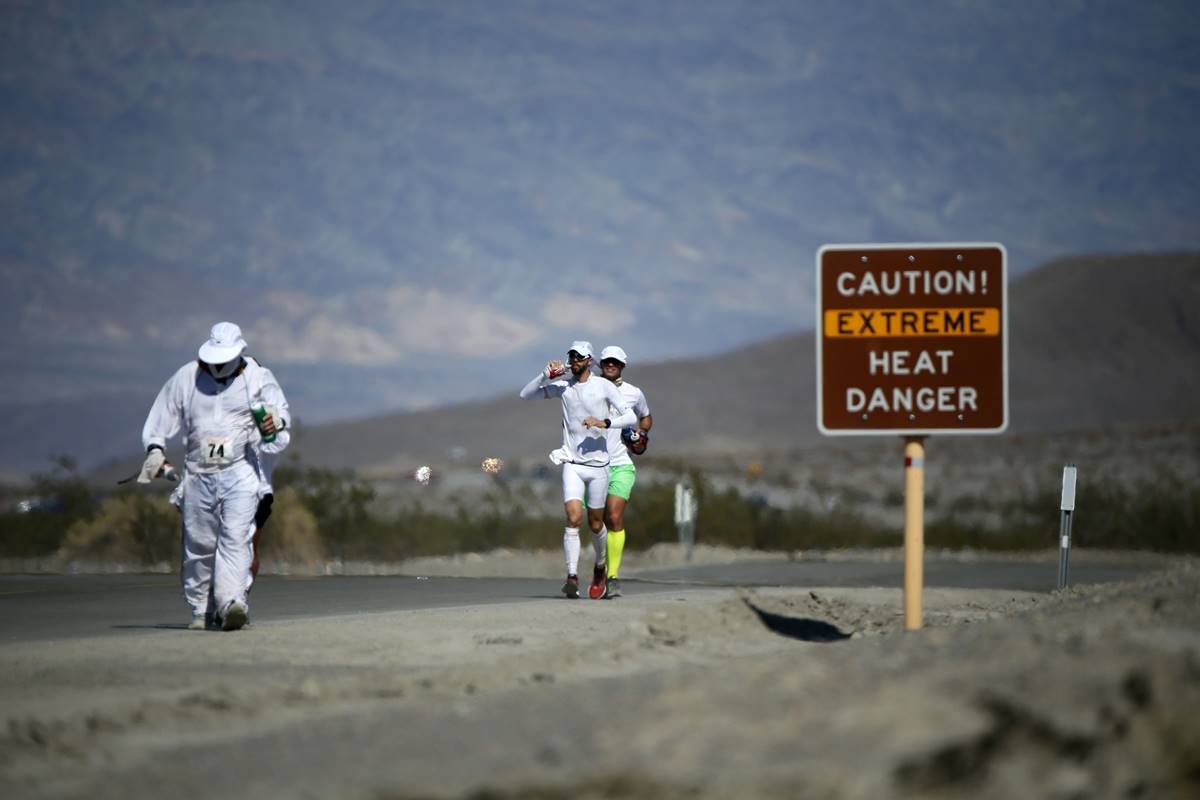Home>Misc>Featured>What Can Your Toes Tell You About Your Health
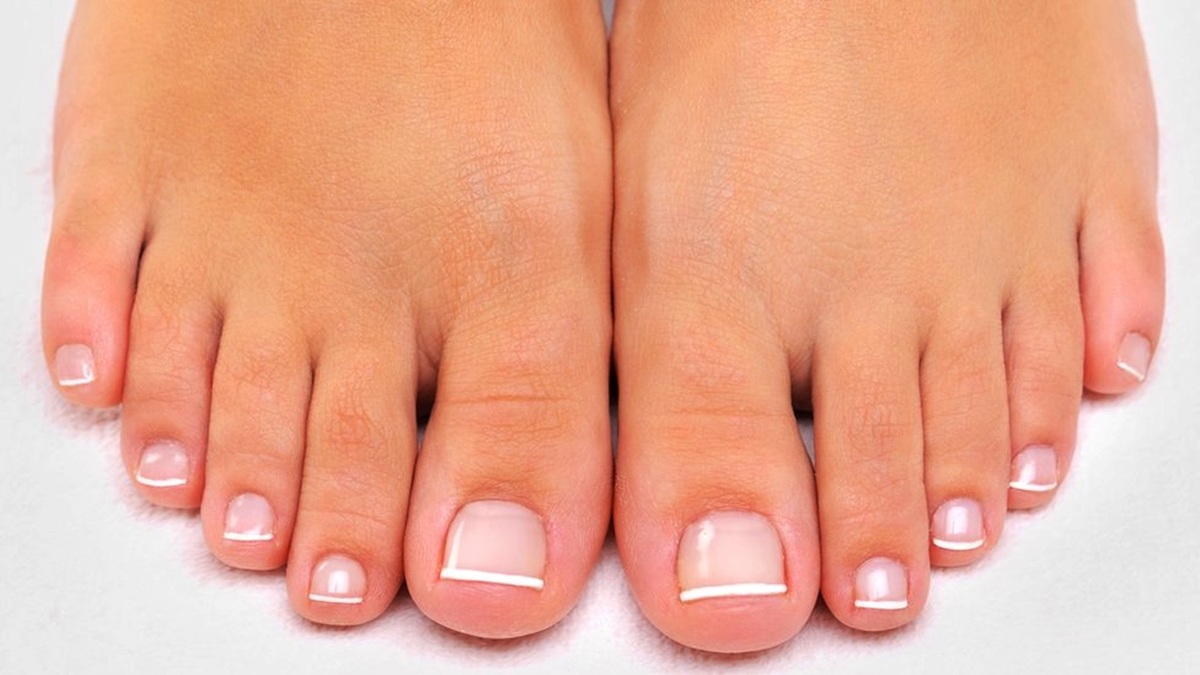

Featured
What Can Your Toes Tell You About Your Health
Modified: August 22, 2023
Discover what your toes can reveal about your overall health. Dive into this featured article to uncover the surprising signs and symptoms that your toes might be silently signaling.
Introduction
Our bodies are remarkable and intricate, with various parts serving specific functions. While we may often overlook them, our toes play a crucial role in our daily lives, providing balance, stability, and support as we walk, run, and engage in other activities. However, did you know that our toes can also reveal insights about our overall health?
The appearance and condition of our toes can be indicators of underlying health issues and can prompt us to pay closer attention to our well-being. From hammer toes to bunions and ingrown toenails, certain abnormalities can be signs of specific health conditions. By understanding these associations, we can recognize potential problems early on and seek appropriate medical care.
In this article, we will explore ten common toe abnormalities and their potential link to various health conditions. It is important to note that while these associations exist, toe abnormalities alone do not necessarily mean that you have a specific health condition. However, recognizing these signs can help facilitate early detection and treatment, ultimately leading to improved health outcomes.
So, let’s dive into the fascinating world of toe health and uncover what our toes can tell us about our overall well-being.
Toe Abnormalities and Health Conditions
Our toes are susceptible to various abnormalities, which can be indicative of underlying health conditions. Let’s explore ten common toe abnormalities and their potential links to specific health issues:
1. Hammer Toes
Hammer toes are characterized by an abnormal bend at the middle joint of a toe, causing it to resemble a hammer. This condition may be a sign of muscle imbalances, nerve damage, or arthritis. It can also be caused by wearing ill-fitting shoes for prolonged periods.
2. Bunions
Bunions are bony bumps that develop at the base of the big toe, causing it to turn inward and crowd the other toes. They are often associated with wearing narrow, tight-fitting shoes and can be symptomatic of arthritis or genetic predisposition.
3. Morton’s Neuroma
Morton’s neuroma is a painful condition that affects the nerves between the toes, most commonly the third and fourth toes. It is often characterized by sharp, burning pain, tingling, or numbness. This condition is typically caused by wearing high heels or tight shoes, and it may also be a result of certain foot deformities or trauma.
4. Ingrown Toenails
Ingrown toenails occur when a toenail grows into the surrounding skin, causing pain, redness, and swelling. This condition can be caused by improper nail trimming, tight shoes, or trauma. In some cases, ingrown toenails may be a symptom of an underlying fungal infection or an abnormal nail curvature.
5. Raynaud’s Disease
Raynaud’s disease is a condition that affects the blood vessels, causing them to narrow in response to cold temperatures or emotional stress. People with Raynaud’s disease may experience numbness, tingling, or a change in color (usually turning white, then blue, and finally red) in their toes and fingers. The exact cause of this condition is unknown, but it may be associated with autoimmune disorders.
6. Clubfoot
Clubfoot is a congenital condition characterized by an abnormal position of the foot, with the heel pointing downward and the toes turned inward. It is usually present at birth and may affect one or both feet. Clubfoot occurs due to abnormal development of the bones, muscles, tendons, and ligaments in the foot. While the exact cause is unknown, it may be influenced by genetic and environmental factors.
7. Gout
Gout is a form of arthritis that occurs when uric acid builds up in the bloodstream, leading to the formation of uric acid crystals in the joints. The big toe is a common site for gout attacks, which are characterized by intense pain, swelling, and redness. Risk factors for gout include a diet high in purine-rich foods, excessive alcohol consumption, obesity, and certain medical conditions.
8. Rheumatoid Arthritis
Rheumatoid arthritis is an autoimmune disease that causes chronic inflammation in the joints. It can affect any joint in the body, including the toes. Symptoms include joint pain, stiffness, swelling, and deformities. Rheumatoid arthritis is often diagnosed through a combination of physical examination, blood tests, and imaging studies.
9. Diabetes
Diabetes is a chronic condition that affects the body’s ability to regulate blood sugar levels. It can lead to various complications, including peripheral neuropathy, which can cause numbness, tingling, or burning sensations in the toes and feet. People with diabetes are also more prone to developing foot ulcers and infections, which require special care and attention.
10. Peripheral Artery Disease
Peripheral artery disease (PAD) occurs when there is a buildup of plaque in the arteries, restricting blood flow to the extremities, including the toes. Symptoms of PAD may include pain, cramping, numbness, or weakness in the legs and feet, particularly during physical activity. Risk factors for PAD include smoking, diabetes, high blood pressure, high cholesterol, and a sedentary lifestyle.
It is important to note that while toe abnormalities can sometimes be indicative of certain health conditions, a proper diagnosis should be made by a healthcare professional. Regular foot examinations and consultation with a podiatrist can help ensure early detection, effective treatment, and improved quality of life.
Hammer Toes
Hammer toes are a common toe abnormality that can affect one or more toes. They are characterized by an abnormal bend at the middle joint of the toe, causing it to resemble a hammer. While hammer toes can be present at birth, they are often caused by muscle imbalances, nerve damage, or arthritis.
One of the main causes of hammer toes is wearing tight or ill-fitting shoes for prolonged periods. Shoes that squeeze or cramp the toes force them into an unnatural position, leading to the development of hammer toes over time. Additionally, certain foot abnormalities, such as high arches or flat feet, can increase the risk of developing this condition.
Hammer toes can be painful and make it difficult to find comfortable footwear. They can also cause corns or calluses to form on the tops of the toes or the ball of the foot, further adding to discomfort and pain.
While hammer toes may simply be a cosmetic concern for some people, they can also be indicative of underlying health conditions. For example, individuals with arthritis are more prone to developing hammer toes due to the joint inflammation and deformities associated with the disease.
It is essential to address hammer toes promptly to prevent further complications. Non-surgical treatment options include wearing properly fitted shoes with a wider toe box, using toe cushions or splints to realign the toe, and practicing exercises to strengthen the toe muscles and improve flexibility. In some cases, surgery may be necessary to straighten the affected toe or toes and relieve pain.
If you notice any signs of hammer toes, such as a bent toe or difficulty fitting into shoes, consult with a podiatrist or foot specialist. They can provide an accurate diagnosis and recommend appropriate treatment options based on the underlying cause of your hammer toes.
By addressing hammer toes early and addressing their root causes, you can alleviate discomfort, improve foot function, and maintain proper foot health.
Bunions
Bunions are a common toe abnormality that affects the joint at the base of the big toe, causing it to turn inward and crowd the other toes. This results in a bony bump forming on the side of the foot. Bunions can be both unsightly and painful, making it difficult to find shoes that fit comfortably.
While the exact cause of bunions is not fully understood, several factors contribute to their development. Genetics plays a significant role, as bunions tend to run in families. Foot structure and mechanics also play a role, as having flat feet or unstable joints can increase the risk of developing bunions.
One of the most significant factors contributing to bunions is wearing narrow, tight-fitting shoes, especially high heels, for extended periods. These types of shoes force the toes into a cramped position and place excessive pressure on the joint at the base of the big toe.
Bunions can cause pain, swelling, redness, and limited movement in the affected joint. Over time, they can lead to the development of other toe deformities, such as hammertoes or claw toes. Additionally, bunions can make it difficult to find shoes that fit properly, leading to further discomfort and exacerbating the condition.
Treatment options for bunions depend on the severity of the condition. For mild cases, non-surgical measures may be sufficient. These include wearing properly fitted shoes with a wide toe box, using padding or splints to support the toe and alleviate pressure, and taking over-the-counter pain medications to manage any discomfort.
In more severe cases, when bunions cause significant pain or interfere with daily activities, surgery may be recommended. Bunion surgery aims to realign the bones and correct the deformity. The specific surgical approach will depend on the severity of the bunions and other factors, and it is best determined through consultation with a podiatrist or orthopedic specialist.
If you suspect you have bunions, seek medical evaluation and guidance from a foot specialist. They can assess the condition and recommend appropriate treatment options based on the severity of your bunions and your specific needs.
By addressing bunions promptly and making appropriate lifestyle changes, such as wearing comfortable shoes and practicing foot exercises, you can alleviate pain, prevent further deformity, and improve your overall foot health.
Morton’s Neuroma
Morton’s neuroma is a painful condition that affects the nerves between the toes, most commonly the third and fourth toes. It is characterized by a thickening of the nerve tissue, causing sharp, burning pain, tingling, or numbness in the affected area. Morton’s neuroma usually develops due to repetitive compression or irritation of the nerve.
One of the primary causes of Morton’s neuroma is wearing high-heeled shoes or tight shoes that squeeze the toes together. These types of footwear can increase pressure on the forefoot and compress the nerves, leading to the development of the neuroma. Additionally, certain foot deformities, such as flat feet or high arches, can contribute to the condition.
Individuals with Morton’s neuroma may experience pain and discomfort when walking or standing for extended periods. The pain typically radiates from the ball of the foot to the toes and may be exacerbated by wearing tight shoes or engaging in activities that involve repetitive foot movements.
Treatment for Morton’s neuroma aims to alleviate pain and reduce pressure on the affected nerve. Initially, conservative measures may be tried, including wearing shoes with a roomy toe box, using padded insoles or orthotics for cushioning and support, and avoiding activities that worsen symptoms.
If conservative treatments fail to provide sufficient relief, more advanced options may be considered. These can include injections of anti-inflammatory medications or local anesthetics to reduce pain and inflammation. In some cases, surgery may be recommended to remove the neuroma or release pressure from the affected nerve.
If you suspect you have Morton’s neuroma, it is essential to consult with a podiatrist or foot specialist for an accurate diagnosis and personalized treatment plan. They can evaluate your symptoms, conduct any necessary imaging tests, and recommend appropriate interventions to help alleviate your pain and improve your foot function.
By addressing Morton’s neuroma promptly and making changes to footwear and activity levels, you can alleviate discomfort, reduce the risk of further nerve damage, and improve your overall foot health.
Ingrown Toenails
Ingrown toenails are a common condition where the edge of a toenail grows into the surrounding skin, causing pain, redness, and swelling. This condition most commonly affects the big toe, but it can occur on any toe. Ingrown toenails can be caused by various factors, including improper nail trimming, tight shoes, trauma, or genetic predisposition.
One of the main causes of ingrown toenails is cutting the nails too short or rounding them at the corners. This can encourage the nails to grow into the skin instead of over it. Additionally, wearing shoes that are too tight or narrow can compress the toes and lead to ingrown toenails. Injury or trauma to the toe, such as stubbing it or dropping something heavy on it, can also cause the nail to grow incorrectly.
The symptoms of ingrown toenails can range from mild discomfort to severe pain. Initially, ingrown toenails may cause redness and slight swelling around the affected area. As the condition progresses, the skin may become infected, leading to increased pain, pus drainage, and even the formation of an abscess.
Treatment for ingrown toenails depends on the severity of the condition. For mild cases, soaking the foot in warm water and gently lifting the ingrown edge of the nail with a clean instrument can help alleviate discomfort. Using over-the-counter antibiotic ointments can also prevent infection.
If the ingrown toenail becomes more painful or infected, professional intervention may be necessary. A podiatrist can trim the nail properly, remove the ingrown portion, and prescribe oral antibiotics if an infection is present. In some cases, a partial or complete nail avulsion may be performed to permanently remove the ingrown portion of the nail.
Prevention is key when it comes to ingrown toenails. To minimize the risk, it is important to trim your nails straight across and avoid rounding the edges. Wear shoes that provide enough room for your toes to move comfortably, and choose breathable socks made of natural fibers. If you have recurring ingrown toenails or are unsure how to properly care for your nails, consult with a podiatrist for guidance.
By practicing good nail hygiene, wearing comfortable shoes, and seeking prompt treatment for ingrown toenails, you can prevent complications, alleviate pain, and maintain optimal foot health.
Raynaud’s Disease
Raynaud’s disease, also known as Raynaud’s syndrome or phenomenon, is a condition that affects the blood vessels, primarily in the fingers and toes. It causes them to narrow in response to cold temperatures or emotional stress, resulting in reduced blood flow to these areas. Raynaud’s disease is characterized by changes in skin color and sensation in the affected digits.
The exact cause of Raynaud’s disease is still unknown, but it is believed to be a result of an exaggerated response of the blood vessels to cold or emotional triggers. It is thought to be related to abnormal functioning of the blood vessels and the nervous system that controls them. In some cases, Raynaud’s disease can be secondary to certain underlying medical conditions, such as autoimmune disorders.
One of the most noticeable symptoms of Raynaud’s disease is a change in skin color. When exposed to cold or stress, the affected fingers or toes may turn white (due to reduced blood flow), then blue or purple (due to lack of oxygen), and finally red (as blood flow returns). The affected areas may also feel cold and numb, and individuals may experience a tingling or burning sensation.
While Raynaud’s disease itself is not life-threatening, it can significantly impact an individual’s quality of life. In severe cases, it can lead to tissue damage, ulcers, and even gangrene. People with Raynaud’s should take precautions to protect their extremities in cold weather and avoid known triggers that cause the blood vessels to constrict.
Treatment for Raynaud’s disease focuses on managing symptoms and preventing complications. This includes keeping warm by wearing gloves, socks, and layering clothing in cold environments. Avoiding excessive stress and making lifestyle modifications, such as quitting smoking and managing stress levels, can also help reduce the frequency and severity of Raynaud’s episodes.
In some cases, medications may be prescribed to help increase blood flow and reduce the frequency and severity of attacks. These medications may include calcium channel blockers, alpha-blockers, or vasodilators.
If you suspect you have Raynaud’s disease, it is important to consult with a healthcare professional for an accurate diagnosis and appropriate management strategies. They can evaluate your symptoms, rule out any underlying medical conditions, and provide guidance on managing Raynaud’s episodes.
By taking steps to protect your extremities from cold temperatures and managing stress, you can minimize the impact of Raynaud’s disease and improve your overall quality of life.
Clubfoot
Clubfoot is a congenital condition that affects the positioning of the foot, causing it to turn inward and downward. The heel may be pointed downward, and the foot may be twisted inward. This abnormal positioning is present at birth and can occur in one or both feet. Clubfoot is not typically painful for infants, but if left untreated, it can lead to mobility issues and discomfort later in life.
The exact cause of clubfoot is unknown, but it is believed to be a combination of genetic and environmental factors. It is not caused by anything the parents did or did not do during pregnancy. Clubfoot occurs due to abnormal development of the bones, muscles, tendons, and ligaments in the foot. This can result in shortened tendons and tight muscles on the inner side of the foot, causing the foot to take on its characteristic shape.
The treatment of clubfoot typically begins soon after birth. The aim is to gradually correct the position of the foot through gentle manipulation, stretching, casting, and bracing. This process, known as the Ponseti method, involves a series of weekly appointments where the foot is manipulated and casted to gradually straighten it. Once the correction is achieved, a brace is used to maintain the corrected position of the foot.
If the Ponseti method is not successful or if the condition is diagnosed later in childhood or adulthood, surgery may be required to correct the foot deformity. The specific surgical procedures will depend on the severity of the clubfoot and the age of the patient.
Early detection and treatment of clubfoot are crucial for the best outcomes. Treatment should begin as soon as possible after birth to take advantage of the baby’s flexibility and the maximum potential for correction. It is important to work closely with a healthcare professional, such as a pediatric orthopedic specialist, who has experience in treating clubfoot.
The long-term prognosis for individuals with treated clubfoot is generally positive. With appropriate treatment and follow-up care, most people with clubfoot can achieve a normal gait and lead active, fulfilling lives. Regular check-ups and monitoring are important to ensure the foot remains in the corrected position as the child grows.
By addressing clubfoot early and adhering to the recommended treatment plan, individuals with clubfoot can achieve improved foot function and mobility, allowing them to participate fully in activities and enjoy a higher quality of life.
Gout
Gout is a form of inflammatory arthritis that occurs when there is an accumulation of uric acid in the bloodstream, leading to the formation of uric acid crystals in the joints. While gout can affect any joint in the body, it commonly affects the big toe. The condition is characterized by sudden and severe attacks of pain, swelling, redness, and tenderness in the affected joint.
The primary cause of gout is an elevated level of uric acid in the blood, a condition known as hyperuricemia. Uric acid is a byproduct of the breakdown of purines, substances found in certain foods and produced by the body. When the level of uric acid becomes too high or the body has difficulty eliminating it efficiently, crystals can form in the joints, resulting in gout symptoms.
Several factors can contribute to the development of gout. These include a diet high in purine-rich foods (such as organ meats, shellfish, and certain types of fish), excessive alcohol consumption (especially beer), obesity, certain medical conditions (such as kidney disease and diabetes), and certain medications (such as diuretics).
The symptoms of gout typically come on suddenly and often occur at night. The affected joint, typically the big toe, becomes hot, swollen, and extremely painful to the touch. The pain can be so intense that even the weight of a bedsheet can cause discomfort. The affected joint may also become red and shiny.
Treatment for gout involves managing pain during acute attacks and long-term prevention of future attacks. Nonsteroidal anti-inflammatory drugs (NSAIDs) are commonly prescribed to reduce pain and inflammation during acute episodes. In severe cases, corticosteroids may be recommended. Lifestyle modifications, such as maintaining a healthy weight, drinking plenty of fluids, and avoiding trigger foods, can help reduce the frequency of gout attacks.
Medications to lower uric acid levels, such as xanthine oxidase inhibitors or uricosuric agents, may be prescribed for individuals with recurrent gout or those who have complications such as kidney stones. It is important to work with a healthcare professional to determine the most appropriate treatment plan based on the individual’s specific circumstances and medical history.
By managing gout effectively, including making dietary changes, taking prescribed medications, and maintaining a healthy lifestyle, individuals can reduce the frequency and severity of gout attacks, prevent long-term joint damage, and improve their overall quality of life.
Rheumatoid Arthritis
Rheumatoid arthritis (RA) is a chronic autoimmune disease that primarily affects the joints but can also affect other organs in the body. It is characterized by inflammation and swelling of the joints, which can lead to pain, stiffness, and joint deformities. While any joint can be affected by RA, it commonly affects the small joints of the hands and feet, including the toes.
The exact cause of rheumatoid arthritis is unknown, but it is believed to be a result of a combination of genetic and environmental factors. In individuals with RA, the immune system mistakenly attacks healthy tissues, including the synovium, which is the lining of the joints. This leads to persistent joint inflammation and damage.
Rheumatoid arthritis can present with a variety of symptoms, including joint pain, morning stiffness, fatigue, and general malaise. In the toes, RA can cause swelling, tenderness, and difficulty with walking or bearing weight. Over time, RA can lead to deformities in the toes, such as bunions or hammer toes.
Early diagnosis and treatment are crucial in managing rheumatoid arthritis effectively and preventing long-term complications. Treatment for RA typically involves a combination of medication, physical therapy, and lifestyle modifications.
Medications used in the treatment of RA include nonsteroidal anti-inflammatory drugs (NSAIDs) to alleviate pain and reduce inflammation, disease-modifying antirheumatic drugs (DMARDs) to slow down the progression of the disease, and biologic agents, which target specific immune system components involved in the inflammatory process.
Physical therapy can help manage symptoms and improve joint function by providing exercises to strengthen the muscles around the joints, improving flexibility, and teaching joint protection techniques.
Lifestyle modifications, such as regular exercise, maintaining a healthy weight, and managing stress, can also play a crucial role in managing rheumatoid arthritis. Additionally, wearing supportive and comfortable shoes can help alleviate foot and toe pain associated with RA.
Regular follow-up with a rheumatologist is important in managing RA effectively. They can monitor disease activity, adjust treatment plans as necessary, and provide guidance on managing symptoms.
While rheumatoid arthritis is a chronic condition, with proper management, individuals with RA can lead active and fulfilling lives. By seeking early diagnosis, adhering to treatment plans, and making necessary lifestyle adjustments, individuals can reduce joint inflammation, improve joint function, and enhance their overall quality of life.
Diabetes
Diabetes is a chronic metabolic disorder characterized by high levels of glucose (sugar) in the blood. It can have a significant impact on various parts of the body, including the feet and toes. Diabetes can affect both the blood vessels and nerves in the feet, leading to complications and potential health issues.
One of the most common foot-related complications in individuals with diabetes is peripheral neuropathy. High blood sugar levels can damage the nerves over time, leading to decreased sensation, tingling, or a burning sensation in the feet and toes. This loss of sensation can make it challenging to detect injuries or develop foot ulcers, which can then become serious if left untreated.
Additionally, diabetes affects the circulatory system, leading to peripheral arterial disease (PAD). PAD occurs when the arteries that supply blood to the legs and feet become narrow or blocked. Poor circulation can result in poor wound healing and increase the risk of infections and gangrene.
Managing diabetes is crucial in promoting foot health and preventing complications. Individuals with diabetes should maintain healthy blood sugar levels through diet, exercise, and medication as prescribed by their healthcare provider. Regular monitoring of glucose levels is essential to ensure they remain within a target range.
Proper foot care is also a vital aspect of managing diabetes. This includes daily inspection of the feet for any cuts, blisters, or sores. It is important to keep the feet clean and dry, and to moisturize to prevent dry skin and cracking. Trimming toenails carefully and wearing well-fitting, comfortable shoes with good support are also important to prevent injuries.
Regular visits to a podiatrist or foot specialist are recommended for individuals with diabetes. A podiatrist can assess the feet, identify any early signs of complications, and provide guidance on proper foot care. They can also identify any areas of high pressure or deformities that may require special footwear or orthotic devices.
By effectively managing diabetes and adopting appropriate foot care practices, individuals can reduce the risk of foot complications, improve wound healing, and maintain overall foot health.
Peripheral Artery Disease
Peripheral artery disease (PAD) is a condition that occurs when there is a narrowing or blockage in the arteries that supply blood to the limbs, primarily the legs and feet. Reduced blood flow to the lower extremities can cause a variety of symptoms, impacting the toes as well.
The primary cause of PAD is atherosclerosis, a condition characterized by the buildup of plaque inside the arteries. This plaque is made up of cholesterol, fatty deposits, and other substances that can restrict blood flow. Common risk factors for PAD include smoking, diabetes, high blood pressure, high cholesterol levels, obesity, and a sedentary lifestyle.
When PAD affects the lower extremities, it can lead to symptoms such as leg pain, cramping, numbness, weakness, and a feeling of coldness in the feet and toes. These symptoms may worsen with physical activity and improve with rest. In severe cases, PAD can lead to non-healing wounds, infections, and even tissue death (gangrene).
Managing PAD involves both lifestyle changes and medical interventions. Lifestyle modifications may include quitting smoking, adopting a healthy diet low in saturated fats and cholesterol, engaging in regular exercise, and maintaining a healthy weight.
Medications may be prescribed to manage underlying conditions like high blood pressure, high cholesterol, and diabetes. Additionally, medications such as antiplatelet agents or anticoagulants may be used to prevent blood clots and improve blood flow in the affected arteries.
In some cases, medical procedures or surgeries may be required to restore blood flow in the arteries. These can include angioplasty, stenting, or bypass surgery, depending on the severity and location of the arterial blockages.
Regular monitoring and follow-up with a healthcare professional, such as a vascular specialist, is crucial for the management of PAD. They can assess the progression of the disease, provide treatment options, and offer guidance on how to prevent further complications.
For individuals with PAD, proper foot care is essential to prevent wounds and infections. This includes inspecting the feet daily, keeping them clean and moisturized, wearing appropriate footwear, and avoiding activities that can cause trauma or injury to the feet.
By managing risk factors, adopting a healthy lifestyle, and seeking appropriate medical care, individuals with PAD can slow down the progression of the disease, reduce symptoms, and maintain optimal foot health.
Conclusion
Our toes play an important role in our overall health and well-being. They provide balance, stability, and support as we move, and they can also provide valuable insights into our overall health. Toe abnormalities can often be indicators of underlying health conditions, prompting us to pay closer attention to our overall well-being.
From hammer toes and bunions to Morton’s neuroma and ingrown toenails, various toe abnormalities can be associated with specific health conditions. It is crucial to recognize these signs early on, seek proper medical care, and make necessary lifestyle changes to manage these conditions effectively.
By understanding the links between toe abnormalities and health conditions, we can take proactive steps to address any issues and improve our overall foot and general health. This may involve seeking medical evaluation, making lifestyle modifications, using appropriate footwear, and practicing good foot care habits.
It is important to remember that toe abnormalities alone do not necessarily mean that you have a specific health condition. A proper diagnosis should be made by a healthcare professional who can provide appropriate guidance and treatment based on your unique circumstances.
Maintaining foot health is an essential part of our overall well-being. Regular check-ups with a podiatrist or foot specialist can help us stay proactive in detecting any abnormalities and managing foot-related conditions effectively. By taking proper care of our feet and addressing any issues promptly, we can improve our mobility, comfort, and quality of life.
So, let’s pay attention to our toes and listen to what they may be telling us about our health. By being proactive and taking care of our feet, we can ensure we continue to put our best foot forward in life.

